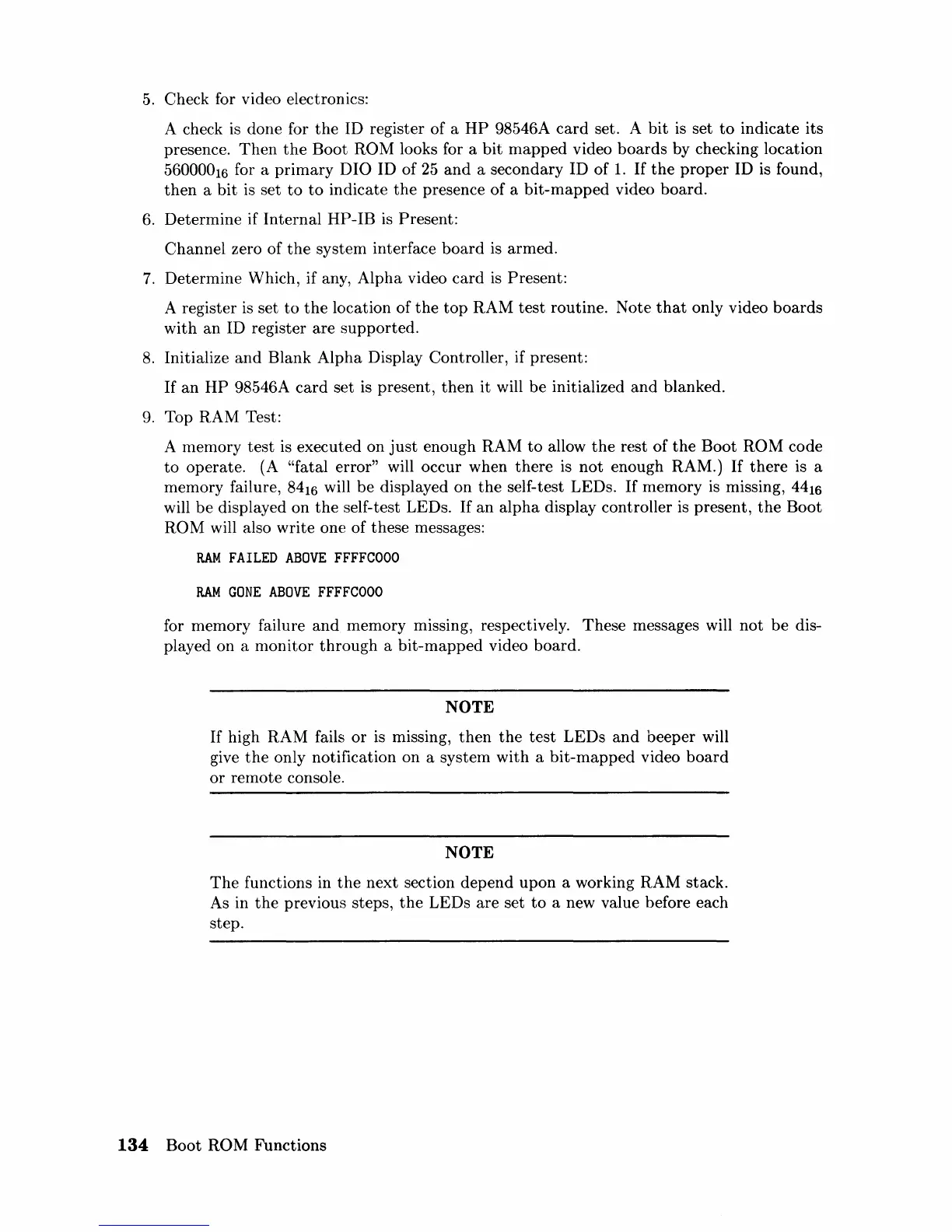5.
Check for video electronics:
A check is done for
the
ID register of a
HP
98546A
card
set. A
bit
is set
to
indicate its
presence.
Then
the
Boot
ROM looks for a
bit
mapped
video
boards
by checking location
56000016 for a
primary
DIO ID of
25
and
a secondary ID of
1.
If
the
proper
ID is found,
then
a
bit
is set
to to
indicate
the
presence of a
bit-mapped
video board.
6.
Determine if
Internal
HP-IB
is Present:
Channel zero of
the
system interface
board
is armed.
7.
Determine Which, if any,
Alpha
video
card
is Present:
A register
is
set
to
the
location of
the
top
RAM
test
routine. Note
that
only video
boards
with
an
ID register are
supported.
8.
Initialize
and
Blank
Alpha
Display Controller, if present:
If
an
HP
98546A
card
set is present,
then
it
will be initialized
and
blanked.
9.
Top RAM Test:
A nlemory
test
is executed on
just
enough RAM
to
allow
the
rest of
the
Boot ROM code
to
operate. (A "fatal error" will occur when
there
is
not
enough RAM.)
If
there
is a
memory failure,
8416
will
be
displayed on
the
self-test LEDs.
If
memory is missing,
4416
will
be
displayed on
the
self-test LEDs.
If
an
alpha
display controller is present,
the
Boot
ROM will also write one of these messages:
RAM
FAILED
ABOVE
FFFFCOOO
RAM
GONE
ABOVE
FFFFCOOO
for memory failure
and
memory missing, respectively. These messages will
not
be
dis-
played on a
monitor
through
a
bit-mapped
video board.
NOTE
If
high RAM fails
or
is missing,
then
the
test
LEDs
and
beeper will
give
the
only notification on a system with a
bit-mapped
video
board
or
remote console.
NOTE
The
functions in
the
next
section
depend
upon
a working RAM stack.
As in
the
previous steps,
the
LEDs
are
set
to
a new value before each
step.
134
Boot
ROM Functions

